PRS is a renowned guitar manufacturer who has been making great prs guitar for metal and others since 1985.
Paul Reed Smith founded the electric guitar company with the mission statement of respecting the rich history of guitar manufacture but pushing the possibilities of technology to create uncompromising beauty, playability, and tone. They strive to build guitars and products of the highest quality, whilst serving their employees and customers with great reverence.
Many PRS guitars are designed with metalheads in mind. Paul Reed Smith was hot on the metal scene. If you are a metal guitarist looking for a new instrument, a PRS Guitar might be a great choice.
They make great guitars for metal for several reasons.
Their necks and body designs are great for soloing, with fast action and enlarged fret counts. Some even have scalloped frets. Their deep cutaways provide shredding access to the highest frets.
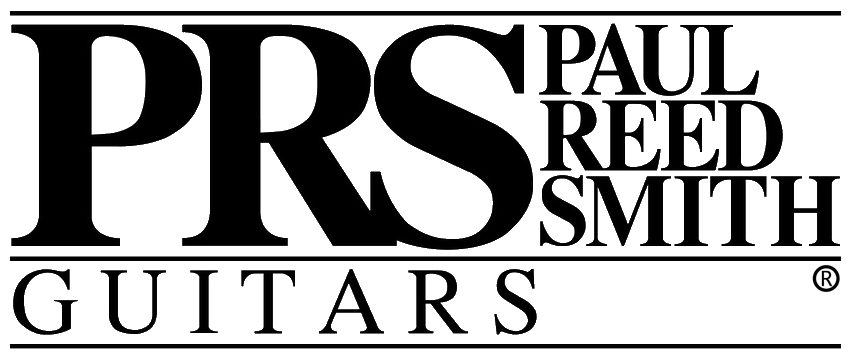
Lots of PRS models also use pickups which are great for producing a metal tone. Some use single-coil pickups, others use humbucker pickups. There are even some models which use high gain active EMG pickups which are a staple in the metal guitar scene. PRS easily makes some of the best guitars for metal, the tough part is choosing which is the best of the best!
I tested 7 products and found the PRS SE Custom 24 to be the best electric guitar for metal.
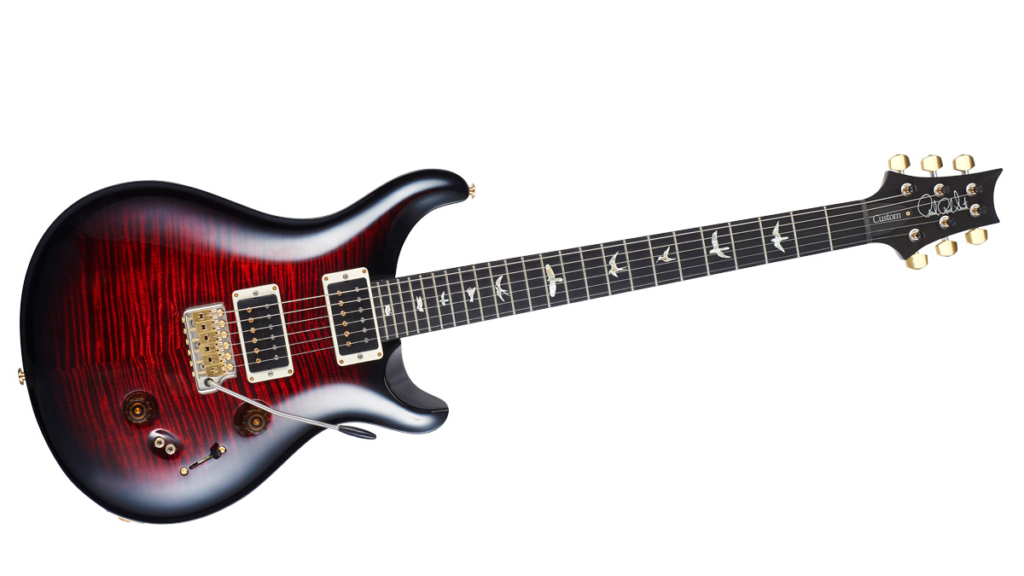
This is a fantastic guitar, with all the features and balls for metal. It packs all the little details you’d want, including a tremolo bridge, 24 frets, dual humbuckers with coil-tapping, and of course, the sexy PRS fretboard. These are versatile, professional instruments that can produce a broad range of metal guitar tones. This would be great in both lead or rhythm positions.
My second choice would be the SE 277 baritone, as a bit of a wild card. If you are open to dropping down a couple of tones, this is a beast from the deep. It won’t be suitable for solos, but this is a fat, monster of an instrument, sitting on the borderline between guitar and bass.
We chose electric guitars for this article. PRS also make some great acoustic guitars, but these generally aren’t so great for metal guitarists. If you needed acoustic guitars for an unplugged metal concert, an acoustic PRS guitar would be a great choice.
Many PRS Guitars use similar design specifications, with similar body shapes, neck and fret sizes, and electronic circuitry. Although, each PRS model has its own unique features and quirks. Some of these make them great for metal.
Keep reading for our full analysis of the best PRS Guitars for metal.
If you’re looking for other brands check out our best Schecter, or best Epiphone for metal posts!
Best PRS Guitar in our tests
- PRS SE Custom 22
- PRS SE Custom 24
- PRS Zach Myers
- 7-String Mark Holcomb PRS Guitar
- PRS SE Paul’s Guitar
- PRS Guitars 6 String SE 245
- PRS SE 277 Baritone Guitar
7 Best PRS Guitar for Metal 2021 Reviewed in Detail
1. PRS SE Custom 22
The SE Custom 22 is a PRS guitar with a vintage tone and attitude. It’s still great for metal but has a bit of a retro vibe and feel.
This guitar has a good sound for metal, with a detailed mid-range, and crystal clear top end. This works well with all styles of amplification, but particularly high gain ones.
Like many PRS guitars, this features a mahogany back and a gorgeous maple top. This version features 22 frets, which is less than the SE 24, but still more than many electric guitars. As always, there are no faults with the fretboard, it’s clear PRS guitars really know what they are doing. The fretboard is decorated with the PRS guitar’s signature bird inlays.
Its Beveled Maple top has smooth external edges for comfort. It uses a gorgeous Flamed Maple Veneer which is certainly eye-catching. One may expect a Solid Spruce body with a maple cap, but the whole body is Maple and Mahogany.
The dual humbuckers have a high output. They aren’t the loudest on this list but they sound brilliant. It uses an 85 in the bridge and a 15 in the neck, both “S” model pickups. It also uses PRS Designed tuners and nickel hardware.
The circuit features a push-pull tone control, which gives more tonal options. You can really sculpt the sound of this guitar, to make it fit anywhere you need to. This tonal variety is important for metal-friendly guitar tones, as the signal needs to be defined for the distortion to work cleanly. Without sculpting a guitar tone pre-distortion, it runs the risk of being a too-full range signal, which can clutter up the sound.
Whilst the tonal controls are good, it doesn’t include separate knobs for each pickup, but it does include coil-tapping. Using a single master volume and tone knob
The SE 22 also includes a PRS Tremolo, which is useful for doing pitch bends and dives, which is a common technique in metal. The tremolo arm hold’s its pitch much better than cheaper guitars.
Pros and Cons
- Long Neck
- Tremolo system
- Most affordable PRS electric guitar
- Coil tapping for sound versatility, single-coil or humbucker
- Only single tone and volume knobs
2. PRS SE Custom 24
The SE Custom 24 is another flagship model from PRS Guitars. This deceptively elegant beast is an update inspired by the 22. This model includes additional frets, bringing the count to 24.
Whilst it may seem insignificant, the extra 2 frets add a lot of options for soloing. This is an extra benefit for metal players, who often play mostly in the higher frets. This is great for double-handed tapping, as it gives players more frets to use the hammer on and pull of techniques with.
The sound quality of this definitely compares with higher-end PRS guitars. The humbucker pickups have a lush, rich sound that will put a smile on the face of any guitar player.
Featuring a similar setup to other guitars on the PRS Se Line, the Custom 24 uses an 81 and 15 “S” pickup combination. These are versatile and will outperform other guitars in many styles of music. As far as stock pickups go, these are as good as you can get. I doubt you’d ever consider replacing them unless you wanted active pickups.
The high-quality materials and top-notch craftsmanship make this a guitar worthy for the hands of any professional. They are also extremely suitable for metal thanks to their long neck and electronic design. Without a doubt, they have the aesthetic to match. Plug one of these into a high gain metal amp and you’re ready to shred.
These also feature the typical PRS tremolo arm for your pitch-bending sessions. These are of great quality and don’t degrade tuning too fast. They will eventually detune the guitar but only after a few hours of pitch-bend heavy practice.
The rosewood fretboard comes with the signature bird neck inlays, something the PRS brand is known for.
From the cheesiest of country tracks to the heaviest death metal, the PRS SE Custom 24 is a great guitar for the job. These are similar to the 22 but with extra frets. Buy a 24 if you want a fantastic metal guitar with extra room for musical soloing.
Pros and Cons
- Extended 24 count fretboard provides extra room for soloing
- Great for tapping and other metal guitar techniques.
- Coil Tapping and high gain output, responds well to distortion.
- Single volume and tone controls
3. PRS Zach Myers
This eye-catching Semi-Hollowbody guitar is a wild choice for metal guitarists. An unusual contender from the Prs lineup. Hollowbody guitars aren’t generally used for metal as they run the risk of feedback, but this model prevented that.
It’s also a single-cutaway which is also rare for PRS guitars. This quality instrument uses dual 245 pickups, with independent tone and volume controls for each circuit. It has a brighter tone which may more resemble a single-coil pickup, but it still has the warmth and fatness of a humbucker.
The 3-way pickup selector is mounted above the fretboard which is unusual for PRS guitars, although this is a single-cutaway which probably explains why. The body shape of this guitar looks to be more inspired by the Gibson Les Paul than other PRS guitars.
It is a little brighter than most guitars on the PRS range, with a honkier tone due to the acoustics of its semi-hollow body. This gives it an interesting character when distorted, responding slightly differently than solid body PRS guitars.
The resonance of the body gives it that familiar Zach Myers tone. He worked closely with PRS to deliver this guitar and gave his seal of approval. Even himself testifying to its amazing value.
This may suit lead guitarists more than rhythm thanks to its more nasal tone.
The PRS designed tuners kept their tune well. This guitar doesn’t have the usual PRS tremolo bridge, instead favoring an adjustable stop tail. Although this could easily be replaced. I’ve seen this guitar mounted with a Bigsby tremolo system before.
The F-hole and strikingly bright blue finish give this incredible instrument a glorious aesthetic.
Pros and Cons
- An extensive tone circuit with independent controls allows for broad sound sculpting.
- 245 pickups have a clear and defined sound
- Not fitted with a tremolo bridge, could be upgraded.
4. 7-String Mark Holcomb PRS Guitar
Legendary metal guitarist from Periphery, brings his name to the PRS Signature line, with the PRS SE Mark Holcomb guitar range.
We’re looking at the 7-string model, but there is a 6-string version available of the PRS SE Mark Holcomb Signature series too.
This has a larger fretboard radius than usual, with a 20” measurement. This creates a flatter fretboard which is beneficial for tapping, soloing, and fretboard technique.
The “Alpha and Omega” signature Seymour Duncan pickups are stunning. They will suit heavier styles of music from hard rock to the heaviest metal. They provide perfect articulation and feel for using alone or in a band.
The PRS Se Mark Holcomb uses 7 strings, with an extra higher string. This opens new doors for musicians, allowing them to explore new depths of music theory. The extra 7th string allows for some new, groundbreaking guitar solos. Having access to this expanded musical vocabulary will feel like a superpower for many players.
The Mark Holcomb Signature Pickups are designed to work with 7 string models, providing a tone and volume knob, and a 3-way pickup selector switch to shape the guitar’s tone.
The PRS SE Mark Holcomb signature is also a 24 fret model, giving around 2 Octaves of notes per string. This is great for soloists and lead guitarists, giving them an expanded melodic range. The neck is slightly wider than the thin neck of a 22 or 24 SE Line PRS guitar, but still comfortable for many players.
This is an excellent guitar for metal players, it was designed by one! Choose this over other SE Models if you have a taste for higher string counts. This is a super nice carved maple 7 string guitar. This is one of the best PRS guitars for metal because of its higher string count.
The tone of this Mark Holcomb guitar will work for many styles, from hard rock to classic rock, punk, grunge, and metal.
This Mark Holcomb guitar comes in 2 finishes: Natural Satin Walnut or Burst Quilted Maple. We love the feel of the satin walnut model, but the Maple finish is also very beautiful. The fretboards of all models are decorated with the Bird Inlays. There are rumors of an ebony fretboard, but it’s yet to be seen.
We think the Mark Holcomb signature range is some of the best PRS Guitars for metal. These are a close contender to the PRS Custom range, but with a little more metallic inspiration from Mark Holcomb. For a more, Rock focused PRS Guitar range, check out the Mark Tremonti Signature Series. The Mark Tremonti series is equally as well built, just with different intentions.
Check Price on AmazonPros and Cons
- Seven strings open up new guitar-playing techniques
- Fantastic feeling guitar and body
- Unique, interesting pickup sound
- No Tremolo
- No Coil tapping, limited electronic controls.
5. PRS SE Paul’s Guitar
This quirky signature guitar is designed by Paul Reed Smith, for Paul Reed Smith.
We think this is one of the best PRS guitars we’ve seen. It may not be the best for metal, but it will still work great.
With a carved and figured maple top, the Mahogany body has a great weight and resonance. We think the look of this guitar is very striking, the electric blue “Aqua” finish looks fantastic and glistens under stage lights. One neat little feature of this over other PRS guitars reviewed in this article is the blue bird inlays. These are usually white on most PRS guitars, for this model they have used a blue-tinted mother of pearl, which goes hand in hand with the color of the main body. This is a mesmerizing guitar.
The body of this guitar feels as sexy as it looks. Perfectly sculpted and refined, both the body and neck have a great feel and balance that will deliver a joyful comfort for new and experienced metal players. The cutaways are deep enough for full fretboard access. This PRS guitar’s good-sized scale length is good for small and large-handed players.
This guitar features 2 TCI “S” Pickups, which delivers a pure, clean sound with a vintage twang. Two mini-toggle switches enable a coil-tapping mode, so the humbuckers can be split into their single coils. This coil-tapping feature, paired with the volume and tone knob and 3-way selector switch gives this guitar a versatile and flexible tone. We thought this could be a close contender for the best PRS guitar for metal players.
This 22-fret neck is slightly wider than other PRS SE Models. This American-made PRS Guitar is an excellent guitar. Similar to the SE Custom range but with a few different guitar features. These have a slightly larger price tag, but I think this is justified with the extra features. This guitar doesn’t feature the locking tuners of some PRS models, but they still retained excellent tuning.
Like other SE Models, it has a fixed hardtail bridge without a tremolo system. This could be easily replaced with a Floyd Rose mechanism to install a whammy bar. Floyd Rose bridges are very popular due to their high quality, and performative pitch-bending provision.
As far as Paul Reed Smith guitars go, this is up there with the greats. Slightly above the Paul Reed Smith entry-level PRS guitars, the “Paul’s Guitar” model is a fantastic PRS SE guitar, This is great for metal and many other genres.
Pros and Cons
- Strong Bass and Treble Pickups
- Stunning aesthetic
- No Tremolo system.
6. PRS Guitars 6 String SE 245
Named after its 24.5” scale length, the PRS SE 245 is slightly shorter than other PRS Se Custom guitars, but we think is still one of the best PRS guitars for metal.
Featuring a single-cutaway, rather than the usual double, this is a more retro and vintage-looking guitar. Its body shape and design seem to be inspired by the Gibson Les Paul.
One key difference is in the tone and volume circuit. The PRS Guitars 245 features independent volume and tone knobs for each pickup. This allows each pickup to be sculpted and shaped independent of the other, which opens up a huge range of tonal possibilities. This matches the electronic design of Gibson Les Pauls, where they used the same tone circuit style. This is different from other PRS guitars, where often there is one volume and tone knob for the whole circuit. Also, like the Les Paul, the selector switch is located above the neck, where the second cutaway would be. This is more aesthetic than functional but gives the guitars a great vintage visual vibe.
This guitar is designed for players who grew up playing short-scale length, single-cut guitars. It shaves around 0.5-1” off the normal PRS Guitar scale length. This is slightly shorter than the PRS SE Custom range, which does have a noticeably different feeling.
The 245 “S” Bass and Treble Humbuchers create a classic, gig, and studio-ready tone. The neck pickup was warm, rich, and thick, with a good amount of low frequencies. The bridge pickup was brighter and twangier, with a defined and present mid-range, and a thick, cutting top end.
The coil tapping feature is a truly powerful element. It basically means that this electric guitar can instantly switch between sounding like a humbucker or a single-coil model.
This feature will be very useful for metal guitarists, as it helps to shape the audio signal before sending it to distortion pedals and the amplifier. It’s very important to have this depth of signal shaping, otherwise, signal distortion and overdrive can sound messy, as it saturates a full-range sound. You want to feed distortion and amps fairly concentrated, narrow signals for the best result, otherwise, it can sound muddy and cluttered. This feature is on some PRS SE Custom models but not all.
Overall, this is a fantastic, flexible PRS guitar in a slightly smaller package. We recommend this PRS Guitar for metalheads with a taste for smaller-scale necks and wider nuts. If you like Gibson Les Pauls and heavy metal, this is a dream instrument for you!
Pros and Cons
- A shorter scale length is more comfortable for some players
- Coil Tapping provides a huge array of guitar tone options
- Bridge not compatible for tremolo arms. You might want to replace it.
7. PRS SE 277 Baritone Guitar
Taking a step away from the traditional guitar format, this PRS SE 277 is a baritone guitar and could be the best PRS guitar for players looking for a lower sound.
Most electric guitars use an E-A-D-G-B-e tuning, where the lowest-pitched E string produces an E2 note. This tuning is used all over the world in electric guitars and acoustic guitars.
Baritone guitars are a deeper-sounding instrument, somewhere between a bass guitar and normal concert guitar.
They drop their tuning system by a few tones, usually favoring a B-standard Baritone Tuning (B-E-A-D-F#-B) or the slightly lower A-standard (A-D-G-C-E-A). These tunings are a 4th and 5th respectively below the typical E tuning.
Baritone guitars are certainly an interesting instrument to add to your arsenal. These growling beasts can produce thick, warm tones that are lower than a guitar, but higher than a bass. Baritone guitars are often used by metal guitarists to create the heaviest, most aggressive sound they can.
This PRS guitar is very well made and doesn’t sacrifice any quality for its baritone scale. Made from maple and mahogany, this PRS guitar could be the best Prs guitar for metal. Its longer rosewood fretboard is designed in a way to make the baritone strings easy to fret. This features all the quality and craftsmanship you’d expect from the PRS brand.
The shape of this (and other) baritone guitar is larger than normal, to accommodate the elongated baritone scale length. This PRS S77 measures in with a 27.7” scale, which is a noticeable couple of inches larger than average guitars.
You will also notice the string gauge is slightly larger on this baritone. These larger strings are important to allow players to tune the strings lower – although baritone string sets can be slightly harder to find in shops.
The PRS Se277 has a brilliant low growling tone. This will be perfect in the hands of shredders and choppers, who like to glide along the fretboard in a spray of sizzling arpeggios. It would be great for sludge and doom players who seek a monstrous, fat, and heavy tone. Its 85 and 15 “s” pickups are a PRS Guitar staple and certainly perform well in this usage. They respond well to the larger strings, with a wide dynamic response and a full, rich tone. These are humbuckers, with no coil-tapping circuit. But Humbuckers are generally preferred for baritone guitars anyway, to enhance their warmth, rather than thinning them out with single-coil pickups.
If you are open to playing a baritone, this could be the best PRS guitar for metal. Its lower tone is a very attractive feature when creating unique metal guitar tones. Baritone guitars have been used by many famous metal bands, including Korn, Sevendust, Staind, and even James Hetfield from Metallica on the St. Anger album.
I think this would suit rhythm guitarists better than lead. I don’t think this would be the best guitar for using in a traditional metal guitar solo, as it may not have notes enough notes. For a lead guitar, we’d recommend a normal, non-baritone model. If you are a metal rhythm guitarist, this could be a great choice and will give your band a unique new sound.
Pros and Cons
- Baritone tuning for a lower register instrument
- Fill out new space in the mix and band
- Very warm sounds monstrous through a distortion unit
- Doesn’t go high enough for some styles.
- Simple electronic circuit.
Buying Guide: Things to look for when buying PRS Guitar
Pickups
The kind of pickups used for metal is slightly different than with other styles of music. For the best results, active pickups are recommended.
These are more suitable for high gain, distorted music thanks to their powered design.
Active Pickups

are often used for metal. They are designed for louder, distortion focussed music. These are different from normal pickups in that they have batteries in them which powers the pickups.
These have a higher output gain, which makes them respond better to distortion and loud amplifiers. They use weaker magnets, which have less of a dampening effect on the guitar’s strings’ resonance, creating a longer decay and sustain.
They have a lower signal-noise ratio, making them ideal for high-gain music.
Common Active Pickup manufacturers include EMG, Fishman, and Seymour Duncan.
The issue with Actives is that they need a battery to power them. There usually isn’t an indicator of remaining battery life, so there is the risk they could run out in the middle of a show! So it’s a wise idea to change them regularly.
Passive Pickups
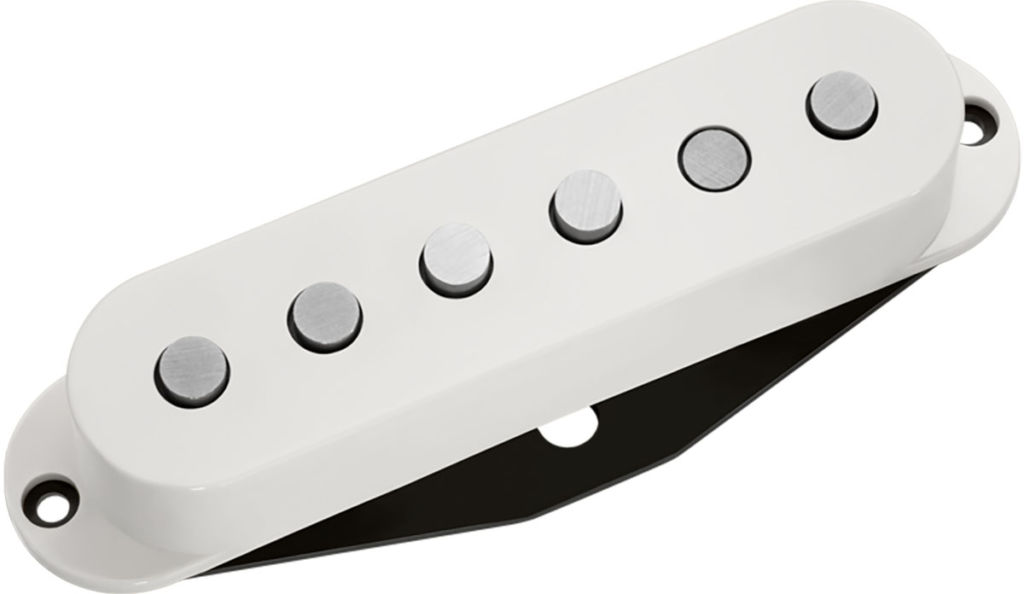
have a weaker output signal than actives but don’t need powering or batteries. This is the most common style of pickup found on guitars.
Because of their quality, much of the sound is derived from the amplifier and pedals they are plugged into. These have a noisier, less clean signal compared to active pickups. Although humbuckers cancel some of this out by joining two together.
Design
Fretboard
Most PRS guitar fretboards use similar design specifications, with some variance in scale length and neck width.
If you have shorter, or smaller hands, you may prefer a shorter scale model like the SE 245. Alternatively, if your hands are on the larger side, an expanded guitar like the 277 Baritone model may be a better choice.
Body Shape
There are a few different styles of body shape in the PRS guitar range. I think the double-cutaway shape is more suitable and typical of metal. There are a few single-cutaway models, but these have a more traditional, classic rock aesthetic.
Although there shouldn’t be any hard and fast rules in music. The double-cutaway might just provide a little more maneuverability around the high end of the fretboard. This would be for metal lead guitarists as it acts as a better platform for soloing and double-handed tapping technique.
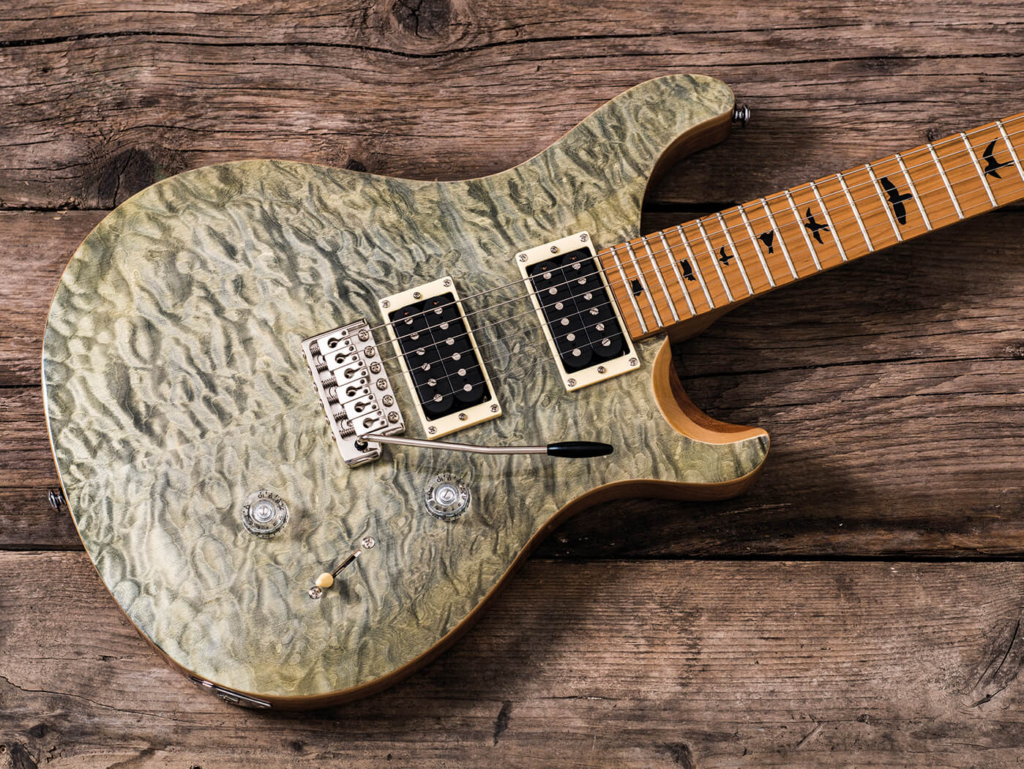
String Count
Metal guitar players are often known for playing expanded guitars. Consider how many strings you’d like on the guitar. 7 and 8 string models are fairly common and bring lots of exciting new music theory to the table.
Although more inexperienced guitarists may find the additional strings confusing or distracting.
If you want a PRS guitar with a larger range, check out some of their 7-string models like the Mark Holcomb Signature.
Hardware
Think about what hardware you’d like to have on the guitar.
Not all PRS guitars come with tremolo systems, which are essential for some players. If you want to be able to do pitch bends and vibrato, then we’d recommended buying a tremolo model.
However, the fixed bridge versions can easily be upgraded to accommodate a vibrato bridge. Many great 3rd part vibrato bridges are compatible with PRS Instruments. My recommendation would be a Bigsby tremolo. Their looks are as strong as their ability to hold tuning – high!
The kind of tuning pegs used varies sometimes too. The majority of PRS instruments use chrome-plated tuners.
Some PRS guitar models use locking tuners, which are a brilliant, time and stress-saving invention. The best PRS guitars tend to be fitted with locking tuners which is a massive bonus.
Amplification and Guitar Pedals
Having a great metal-friendly guitar is one thing, but you’ll need the right amplifier and pedals to get a proper metal tone.
Most metal guitarists use high gain, solid-state amplifiers. These are powered by modern circuitry and have the capacity for a huge amount of gain and distortion.
In an ideal world, you should match an amplifier to the guitar.
The amplifier design should complement the sound of the guitar. If you have a guitar with limited controls, and limited pedals, choosing an amp with lots of features is a good idea. Really you want to use an amp that has some form of Equalisation circuit for tone sculpting.
Some guitar amplifiers include built-in effects which can be a great accessory for metal guitarists.
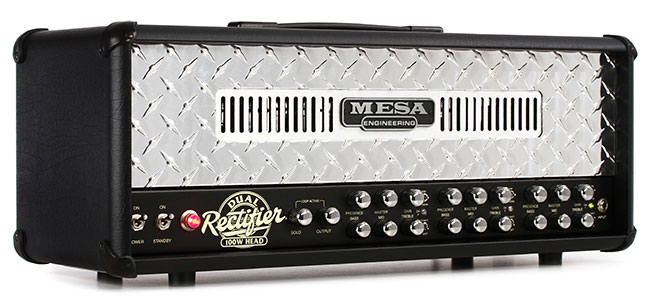
FAQs
Is Paul Reed Smith Guitars good for metal?
Every component used in PRS guitars is of top quality. This keeps the price high but produces fantastic, sturdy instruments.
Some PRS models are definitely designed for metal. The 277 Baritone is definitely in that area. PRS guitars are generally better for metal than earlier brands like Fender. These guitars often feature humbucker pickups and high fret count necks which are conducive to the style.
Any PRS Guitar with coil-tapping features will work excellently for metal, as it gives full control over the sound of the guitar’s signal.
Which metal bands use PRS guitars?
Examples of Metal players who have used metal guitars include Mark Tremonti, Zach Meyers, Mark Lettieri, Martin Simpson, and more.
As for metal bands, we know a lot of Nu Metal bands like to use PRS guitars, also Sikth, Cephalic Carnage, Sikth, Daath, Cradle of Filth, Limp Bizkit, and Korn, amongst many others.
Conclusion
Overall, the top choice of PRS guitar for Metal Players is the PRS SE Custom 24.

Selected for its versatility, comfort, and uncompromising build quality, the SE Custom 24 is a professional-grade electric guitar that would make the dream shredding instrument.
These are a little more costly than the Custom 22 model, but the extra frets are a massive boon for metal guitarists, where complex, high-fret solos are a daily occurrence. Even just having 2 extra frets brings a lot of creative options to soloing. Obviously, the 22 is also fantastic if you’re on a tighter budget. They both have a top-quality sound and feel.
If you’re open to more unusual styles of guitar, the SE 277 baritone is a cool choice for a heavier, lower sound. The Mark Holcomb 7-string is an interesting model which opens up new music theory pathways by adding an extra string. If you feel ready for an extra string, the Holcomb model may be more suitable than the SE 24.
Check out these guitars today!
Noah is an accomplished audio engineer with several years of experience producing music for major companies and independent artists. He enjoys sharing his vast knowledge of audio engineering topics to help musicians and music producers create great music.






